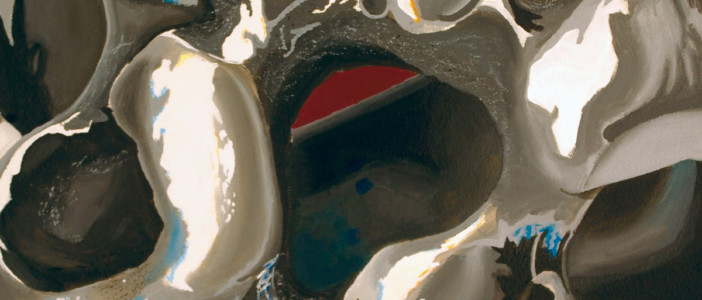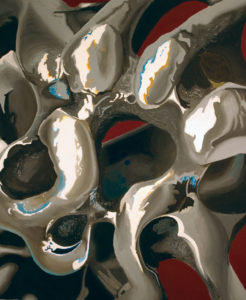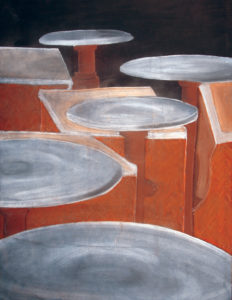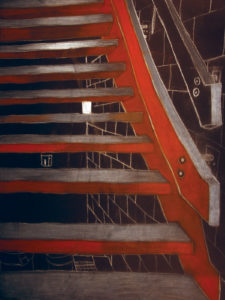
Inca Medicine: Religion, Culture, and Ethnobotany
By Mycaela Crouse '14
LAS 410: Nature and Culture of Peru
In the LAS Capstone Pachamama Never Left: Nature and Culture of Peru students are asked to write a final research paper on a topic of their choosing from an interdisciplinary perspective. Mycaela’s interest in the medical field allowed her to focus her research on the wealth of evidence that the pre-Colombian cultures of Peru practiced a wide array of healing practices. We nominated Mycaela’ s research paper because it embodies the goals of a liberal arts education by drawing from diverse disciplines to investigate medicine in this ancient culture.
– Paulina Mena and Oscar Reynaga
The Inca Empire, at its largest, stretched 2,500 miles along the South American coast, encompassing territory in present day Argentina, Chile, Bolivia, Peru, Ecuador, and even part of Colombia. The civilization began in early 1200 A.D. and expanded in the 1400’s. It ended abruptly in 1532 when Francisco Pizarro and his fellow Spaniards invaded. Before the Spanish arrived, however, the Inca Empire achieved incredible feats such as the 14,000 miles of all-weather highways that linked one side of empire to the other, the construction of anti-seismic buildings so sturdy that they stand today, and the formation of a universal language and religion, despite the empire consisting of more than 10 million subjects. It stands to reason, then, that they would be advanced in their medical practices as well.
The Inca did not practice medicine as we think of it today, but rather incorporated a blend of culture, religion, and knowledge on herbs and minerals. Prioreschi writes in A History of Medicine: Primitive and Ancient Medicine, “Inca medicine, like the medicine of the other populations in Pre-Colombian America, showed that mixture of naturalism and supernaturalism that was the rule in all ancient civilizations” (482). The Inca believed that sickness came from a fault committed by the patient or a neighbor, resulting in an angry god or a curse. They believed that only through the use of natural remedies and supernatural pleas could the patient be healed. They were careful to perform rituals correctly to ward off evil spirits and ensure the patients remained unharmed and healthy. These rituals usually involved some kind of sacrifice: guinea pigs, llamas, food, cumbi cloth, seashells, silver, gold, corn flour, chicha, and/or coca. The animals were killed, the food burned, and the chicha, a type of beer, was poured out onto the ground (Malpass, 107-108). As more and more cultures with their own religions and their own medical practices were incorporated into the expanding empire, the Inca began to recognize that the properties of medicines were inherent in the herbs and minerals rather than a result of an endowment of magical attributes by the gods (Prioreschi, 482). There is even archeological evidence in Paracas and Cuzco that the Inca may have had hospitals as well as centers and schools for the teaching and training of doctors (Marino and Gonzales-Portillo, 942).

Microcosm Assignment by Mary Kate Oakley
Because the Inca had no written language, their knowledge of herbal remedies was passed down orally, usually between family members. Their inability to record and share curative discoveries greatly hindered any advancement in medical knowledge. According to Father Bernabe Cobo, a Jesuit priest who chronicled the daily life and customs of the Inca, their lack of sharing between members of the medical community may have been deliberate. He wrote in 1653 about a noble-born boy who suffered a compound fracture of the tibia. The boy’s father summoned surgeons (Cabo did not elaborate on whether the surgeons were Inca or Spanish) to examine the leg, and they decided the best course of action would be amputation. The boy’s father was reluctant, however, and decided to consult an “old Indian whose occupation was that of healing among the Indians” (166). Cabo then went on to describe the herbalist’s actions: “The old Indian stepped a little way off the road (they were outside of town), and he picked out a certain herb which he immediately smashed between two stones so that it could not be recognized, and it never was” (166). Cabo wrote that the juice from the herb was so potent it cut the bone off without causing the boy any pain and all that was left was a small hole where the tibia had poked through. The boy’s father, amazed, begged the herbalist to reveal which herb he had used:
[The father] was left with such a strong desire to find out about that herb, and he promised that Indian such good pay, with flattery and kindness, that he promised to show it to him. Although he did make the promise, he never kept it. He kept putting the [boy’s father] off with a variety of excuses until winter came with its frost that made the fields wither, which the Indian considered sufficient reason to not keep his promise. (167)
If Cabo’s tale is accurate, then it hints at a culture where knowledge of herbal remedies was a highly guarded secret. Gordon McEwan wrote in The Incas: New Perspectives that healers were highly compensated for their work with payments of food, cloth, and silver (143). It is possible, then, that competition between doctors may be part of the motivation behind hoarding knowledge. Another motive may have been prestige. Healers were seen as possessing a unique connection to the supernatural world that allowed them the power to heal in the natural world. This elite status could only be protected if healing remained a difficult and rare practice (Selin and Shapiro, 242).
The Inca had several different types of doctors, though there are some discrepancies in modern day sources between what they were called and what their roles were. Sir Weldon Dalrymple-champneys described two different types of healers, hampi-camayocs and soncoyocs, in his article in the Proceedings of the Royal Society of Medicine. The hampi-comayoc was a priest-magician-doctor that offered sacrifices, heard confessions, gave advice, healed by driving out the disease-causing demon, and averting plagues and pestilences (387). In their article “Preconquest Peruvian Neurosurgeons: A Study of Inca and Pre-Columbian Trephination and the Art of Medicine in Ancient Peru,” Marino and Gonzales-Portillo refer to these doctors, who treated the nobility, as churihampi-camayoc (947). Somervill calls them collahuayas in Empire of the Inca (101). Soncoyocs, or ccamascas, were healers that practiced among the common people (Dalrymple, 388), though Marino and Gonzales refer to them as sirkaks or sangradors (947).

Unusual Point-of-View by Allyson Mann
Numerous sources listed the Incas as having three main types of doctors that were divided by the type of care they offered rather than the class of people they worked with. The first was the Watukk who diagnosed the disease through the use of divination, visions, and dreams, found the origin of the sickness by observing the patient’s everyday life (referring to the source of the curse, not necessarily the scientific origin), and tracked the overall somatic, emotional, and pathological stages of the illness. The second type was the Hanpeq (also Hampeq) who applied their knowledge of diseases, blended herbs and minerals, and attended to remedies and post-treatment. In Cabo’s story, the “old Indian” was likely a Hanpeq. The third type was the Paqo, whose job was to treat the soul. They used rituals, plant and animal medicines, and healing stones to return balance between the body and spirit (O’Neill, n.p.).
Some studies claimed only men were allowed to become healers, while others stated that both men and women became shamans, though there may have been an unstated distinction between healers and midwives. Dalrymple-champneys explained why there might be such disagreement among modern-day sources: “There were many other grades [of healers], but there is a good deal of confusion in the use of the appellations by the old Spanish historians” (388).
The empire was vast and heavily populated, however, so the number of doctors (no matter the type or gender) per person was often not enough to meet demands. Barbara Somervill wrote in Empire of the Inca that in Inca communities healing involved all members. The women in each ayllu were in charge of caring for and feeding the sick. People rarely lived alone so there was always someone around to attend to the patient (103). Despite the increased interactions between communities because of the Inca Empire’s continued expansion, no known epidemics broke out in the Andean peoples. Through examining mummies, ancient ceramics, and the chronicles of the Spanish, researchers have found evidence of tuberculosis, syphilis, leprosy, rheumatism, typhus, warts, respiratory illnesses, kidney stones, tetanus infections, acromegaly, club foot, hare-lip, epilepsy, ringworm, eczema, tapeworms, lice infestations, and many others. There is a curious lack of evidence for any cancers other than what might have been osteosarcoma (Dalrymple, 388-389). As a warring nation, constantly battling other civilizations for increased territory and wealth, doctors also often dealt with the injuries and wounds of warfare.
All of these diseases were treated through the combination of natural and supernatural practices, though the Inca’s natural techniques are often considered advanced for their time. Given they were a civilization with no written language and had not yet invented the wheel, it is considered remarkable by some that there is evidence of surgical amputation, bloodletting, expert wound care, metal-based dental fillings, bone transplants, casts and splints, gauze and cotton bandaging, surgical sutures and cauterization, laxatives and diuretics, caesarean sections, birth control, abortion, hypnosis, sinus surgery, cranial surgery, and many other medical practices (Selin and Shapiro, 225-226).
The cranial surgery is known as trepanning, and the Inca excelled at it. Though there is evidence of a high mortality rate among patients of the early Inca in the 1200s, by the time the Spanish arrived, the Inca had reached survivability rates of ninety percent. This is evidenced by the regrowth of bone in the trepanned skulls. Given their inability to provide a sterilized environment for the patients and their use of scalpels of copper, bronze, gold, obsidian, or silver and other types of chisels such as the crescent bladed tumi as surgical instruments, a 9 out of 10 survival rate is impressive. Some patients had as many as seven operations performed (Marino and Gonzales-Portillo, 946).
Ancient trepanation has been studied extensively, and researchers think they’ve discovered some of the methods the Inca may have used. The most frequent was cutting four grooves into the skull which separated a quadrilateral portion of the cranium, the grooves were occasionally curvilinear instead of straight. This square portion was then raised and removed. Another method was scraping. The Inca sometimes would chip or abrade considerable amounts of bone before cutting. A third method involved drilling. They would puncture the bone in a circular pattern and then break the walls between the holes (944).
Researchers have had a harder time discovering why the Incas performed this surgery. Evidence of trepanation has actually been found worldwide, and each culture had its own reasons. One hypothesis is that the Inca practiced it in response to warfare injuries. When a skull fragment was driven below the surface after being hit with some sort of weapon, likely a stone headed war club, intracranial pressure would have caused illness and aberrant behavior. Incan skulls have been found with craniotomy holes in locations that exactly match the shape of weapons known to be in use at that time, such as the star-shaped stone porra. Other types of skull fractures may have caused blood clots and pressure on the brain, also possibly resulting in behavioral disturbances and headaches. Another theory is that it was not a surgery performed for natural reasons, as outlined above, but one performed under supernatural considerations. The surgeon would have removed part of the skull in order to release the malicious spirit that had possessed the patient and caused his or her sickness. There are others who believe the surgery occurred for both the natural and supernatural reasons, depending on who performed the operation. The trained hampi-camayoc performed trepanation to fix cranial injuries and the more shaman-based healers, the sancoyoc, practiced it for mystical reasons (944-945).
The biggest concern when performing these operations, besides the necessary anatomical knowledge needed to avoid penetration of the dura mater, is antiseptics and anesthesia. The Inca could not have achieved such high survival rates if they were unable to prevent infection, and the surgery would likely not have been performed nearly as often if anesthesia was unavailable for the patient. The Inca, fortunately, had access to both. There is evidence of hallucinogenic substances which would have served as numbing agents: coca, mescaline, curare, nicotine, quinine, psilocybin, belladonna, Ayahuasca, dopamine, and ergot alkaloid d-lysergic acid. Genipen-based agents were used for cleansing the wounds as they have antibacterial properties (Selin and Shapiro, 235).
The Inca found that not only were there plants good for aiding neurosurgery, but for use in many other medical contexts as well, such as reducing fevers and coughs, increasing fertility, increasing or decreasing libido, use in tonics, infusions, and ointments, alleviation of cramps and chills, stopping the itching from insect or animals bites, and many others. The Inca were well versed in the properties of herbs in each microenvironment. Peru ranges from coastline to rain forests to mountainous elevations, and the Inca had mastered the herbs found in each climate during each season (Selin and Shapiro, 242). Coca, in particular, played a huge role in Inca medicine and religion. A domesticated tropical shrub that today is highly controlled due to its use in the production of cocaine, back then it was a mild stimulant, anesthetic, hunger and thirst suppressant, alleviator of pain and fatigue and altitude sickness, and dry mouth cure due to its ability to increase saliva production. It was burned in ritualistic sacrifices, which were important both for the supernatural side of the healer’s powers and also for Inca religious beliefs. Coca is used for these things among the indigenous Andean people today (Landau, n.p.).
Chicha was another important remedy among the Inca, used for its ability to alter behavior and act as an anesthetic. It is known as the drink of the Incas and is a type of beer (National, 153). Corn, or maize, was the plant most often fermented, though manioc root, quinoa, and the seeds of the molle tree can all be used to produce chicha as well. Chroniclers wrote that it was this beverage’s consumption that prevented kidney and bladder stones from forming (Selin, 841). Wilson et al. reported in 2013 that after using incremental liquid chromatography tandem mass spectrometry on the hair of a 13-year-old child sacrifice, they concluded that these two remedies, coca and chicha, were given to children who were about to be sacrificed due to the remedies’ religious importance and their ability to keep the children calm and peaceful (13322).
The chroniclers described only a few hundred of the possibly thousands of different herbs the Inca used, and researchers agree that it is more likely a lack of competency on the part of the chroniclers rather than a lack of use in Inca medicine. Though all the herbs and their different uses could be its own book, the following are a few examples of various remedies the Inca had at their disposal, sometimes through their knowledge of how to utilize a single plant in wide variety of ways. The molle tree is a perfect illustration of this, mentioned before for its role in chicha making, but also considered a universal medicine for all the Inca’s ailments. The tree’s resin was used as a purgative and treated melancholy. When added to wine it was used against dropsy (Selin, 841). Dried and pulverized, the resin was applied to ulcers and used to treat diseases of the respiratory system. When cooked and added to a bath, the leaves treated gout. Boiling the leaves produced a liquid good for those suffering from eczema. Oil could be prepared from the leaves and was used to combat pain in the joints and stomach sickness. The fruits could be used against stomach complaints as well when made into a plaster. And crushed, the fruit produced a juice that could be drunk to alleviate kidney and bladder complaints (842).
Quinoa was important in medicine as well as in the Inca diet as it was used for, as Selin lists, “stomach complaints, inflammations, spasms, swellings, fever, and liver complaints and so on” (842). Hemostasis could be achieved through extracts of the Andean ratania root, pumachucha scrub, and mixtures high in tannic acid (Marino and Gonzales-Portillo, 947). Matecclu, a species of wetland plant, treated eye infections. Chilca leaves could be used in a mixture to relieve the aches of rheumatism. Sarsaparilla was used in the relief of painful sores (Somervill, 102). Potatoes were freeze-dried and crushed into chuñu, which treated ulcers, spasms, syphilis, and even verruga, a type of Andean wart. Plants such as cabega, vilca, espinco, and mocomoco were all combined with magic to induce fertility. As a culture that deemed childbearing important, those who took herbal medicines causing sterility were punished with death. Those who chose to undertake this method of birth control and escaped punishment were understandably not forthcoming, but chroniclers think the herbal remedy may have been an infusion of the sogue leaves (Selin, 843). The Inca were also the first to use quinine, extracted from tree bark, as a treatment for malaria. In fact, many of the ingredients in the Inca’s herbal remedies are found in our modern day pills.

Unusual Point-of-View by Emma Disterhoft
However, as with every great ancient civilization, eventually the Inca Empire fell. In 1532 the Spanish, led by Francisco Pizarro, invaded the Andes. It was through a very unlucky (on the part of the Inca) series of events that Pizarro was able to conquer the Incas so quickly. They were in the midst of a civil war between two brothers and had recently been decimated by smallpox, which had travelled down from Central America where the Europeans had already invaded. Pizarro quickly killed the emperor, Atahuallpa, and began the systematic take-over of the Incas. These conquistadors brought more than just guns and metal armor, though; they also carried with them those same diseases that had weakened the empire in the first place. Epidemics swept across the Andes and killed millions. Diseases like smallpox, the measles, and the flu, to which the Native Americans had no immunity, are estimated to account for 90% of all indigenous casualties during the European colonization era. The Inca doctors stood little chance in combating these sicknesses given their novelty and how quickly they spread. Setting back Inca healing even more, the Spanish forbid the use of certain plants and herbs in order to further subjugate the natives.
With so many dead, so much forbidden, and no written records to fall back on, much of the Inca knowledge on medicine and healing has been lost. Current sources of knowledge about the Inca are laid out by Selin and Shapiro: “(a) contact period chronicles, (b) ethnographic or anthropological studies that report contemporary indigenous medical customs and beliefs, and, (c) the archaeological evidence that provides physical remains for the assessment of disease vectors and their treatment” (230).
So despite being, overall, extremely detrimental to Inca Empire, the Spanish also provided the first of only three sources available in the study of Inca medicine. That being said, determining the specifics of the interplay between Inca culture, religion, and medicine is difficult when consulting only primary sources from the contact-period. The Spaniard’s ethnocentrism resulted in paragraphs like the following from Father Cobo:
This ignorance is so general among all the Indians that not one of them, unless he is well versed in Spanish, knows how to inform the doctor about his ailment and what could have caused it. Regardless of what the illness may be, when the patient is asked what he has, he can only answer that his body hurts or that his heart is hurting and bothering him. Therefore, the doctor has to resign himself, 10like a veterinarian who cures an animal, to explanations as he sees fit. (165)
There is currently a revival of Inca medicine occurring, with indigenous people tapping into their roots and exploring some of the traditions handed down from their ancestors. Shamanism and healing are taught in specialized schools, and when visiting Peru, tourists can see some of the ritualistic ceremonies performed as well as purchase some herbal remedies the ancient Inca used.
Works Cited
Cobo, Father Bernabe. Inca Religion and Customs. Ed. 1990 of 1653 ed. Trans. Roland Hamilton. United States: Uni versity of Texas Press, 1990. Print.
Dalrymple-champneys, Sir Weldon. “Preventive and Curative Medicine in Ancient Peru.” Proceedings of the Royal Society of Medicine 51 (5 Feb. 1958): 385-393. Print.
Elferink, Jan G.R. Sexuality, procreation, and Inca ethnobotany. LINCOM Studies in Anthropology, 2014. Print.
Gale Group. “Inca Religion, Arts, and Sciences.” Early Civilizations in the Americas Reference Library, 2005. Web.
Handwerk, Brian. “Inca Child Sacrifice Victims Were Drugged.” National Geographic July 2013. Print.
Landau, Fred. “Notes on Coca Erythroxylon coca and E. nogagranatense.” University of Las Vegas, Nevada. N.d. Web.
Malpass, Michael Andrew. Daily Life in the Inca Empire. United States: Greenwood Publishing Group, 1996. Print.
Marino, R. Jr. and M. Gonzales-Portillo. “Preconquest Peruvian neurosurgeons: a study of Inca and pre-Columbian trephination and the art of medicine in ancient Peru.” Neurosurgery 47.4 (Oct. 2000): 940-950. Web.
McEwan, Gordon F. The Incas: New Perspectives. United States: W.W. Norton & Company Ltd., 2006. Print.
National Research Council. Lost Crops of the Incas: Little-Known Plants of the Andes with Promise for Worldwide Cultivation. Washington, DC: The National Academies Press, 1989. Print.
O’Neill, Patt. Glossary of Terminology of the Shamanic & Ceremonial Traditions of the Inca Medicine Lineage. 3rd ed. April 2014. Web.
Prioreschi, Plinio. A History of Medicine. Ed. 2. United States: Horatius Pr, 2002. Print.
Selin, Helaine. Encyclopaedia of the History of Science, Technology, and Medicine in Non-Western Cultures. 2nd Ed. Vol. 1. United States: Springer, 2008. Google eBook. Web.
Selin, Helaine and Hugh Shapiro. Medicine Across Cultures: History and Practice of Medicine in Non-Western Cultures. The Netherlands: Kluwer Academic Publishers, 2003. Print.
Somervill, Barbara. Empire of the Inca. United States: Shoreline Publishing Group, LLC, 2005. Print.
Wilson, Andrew S. et al. “Archaeological, radiological, and biological evidence offer insight into Inca child sacrifice.” Proceedings of the National Academy of Sciences of the United States of America 110.33 (18 June 2013): 13322– 13327. Web.